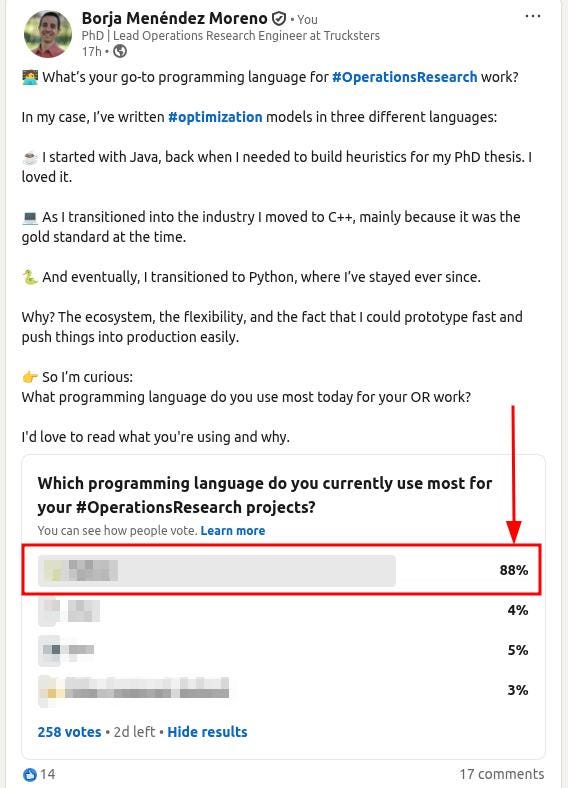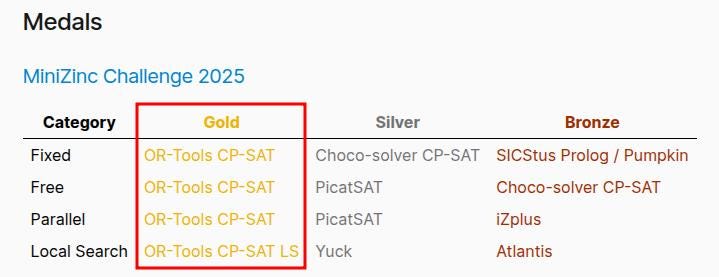📈 The programming language of OR, which one are you using, OR-Tools wins again
Local Optimum: short, imperfect-yet-useful ideas - Edition #22
Welcome to a new edition of Local Optimum: a short, imperfect-yet-useful collection of ideas related to optimization, decision-making, and applied Operations Research.
Let’s dive in! 🪂
1) 👑 The programming language of OR
Machine learning catapulted Python into default status.
There’s a huge ecosystem of libraries that make prototyping models and deploy production code effortless. When ML teams standardized on Python, the rest of the analytics world took notice.
Operations Research followed naturally. OR projects increasingly need data-driven pipelines and seamless integration with company data stacks. Python offers all of that in one place: mature OR toolkits, direct access to ML frameworks, and production-ready web frameworks for APIs.
The result is a faster prototyping, easier collaboration with data scientists, and a single language from data ingestion to optimization and deployment.
Python is the bridge between classical optimization and the ML workflows shaping modern decision-making.
2) 🙊 Which one are you using?
There’s one clear winner, but I’d love to hear your thoughts on this:
(click on the image to go to the post)
3) 🥇 OR-Tools wins again
Last Monday, the MiniZinc challenge announced its winners in different categories.
And without any surprise, the CP-SAT solver from Google OR-Tools won again:
It’s a powerful solver.
I’ve been using it for more than 3 years now, and I had a couple of things to say about it, especially if you’re looking for good documentation.
You can read the post here:
Are you the owner of your results?
That’s the same as asking if you’re the owner of the data that feeds your models/algorithms.
Because it’s common that users look at the plan and say “yes, this works” or they dismiss it outright.
And often, the difference between trust and rejection doesn’t lie in the math. It lies in the data.
Next Monday, I’ll share my thoughts on data ownership as an OR Engineer.
I’ll cover:
🔑 Why you must own the inputs
🧭 What ownership really means
🛠️ How to put it into practice
If you are using real-life data to feed your models, this will be useful. See you Monday!
And that’s it for today!
If you’re finding this newsletter valuable, consider doing any of these:
1) 🔒 Subscribe to the full version: if you aren’t already, consider becoming a paid subscriber. You’ll get access to the full archive, a private chat group, and 30% off new products.
2) 🤝🏻 Collaborate with Feasible. I’m always looking for great products and services that I can recommend to subscribers. Also, if you want to write an article with me, I’m open to that! If you are interested in reaching an audience of Operations Research Engineers, you may want to do that here.
3) 📤 Share the newsletter with a friend, and earn rewards in compensation. You’re just one referral away from getting The Modern OR Engineer Playbook: Mindset, methods, and metrics to deliver Optimization that matters.
If you have any comments or feedback, just respond to this email!
Have a nice day ahead ☀️
Borja.







